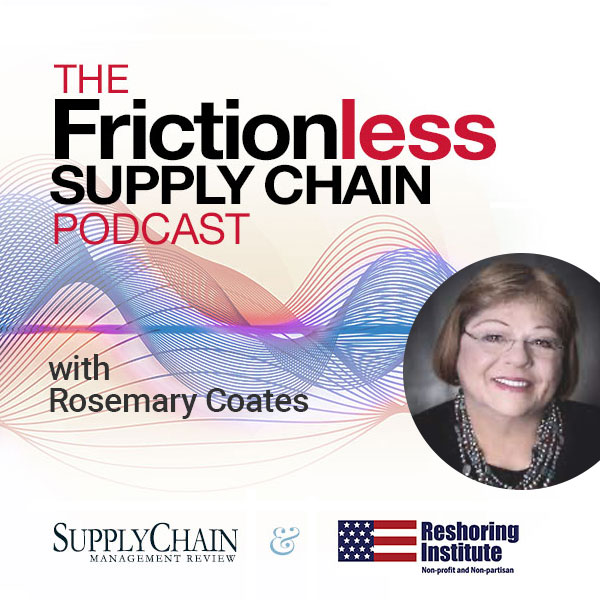Economic uncertainty, fluctuating fuel prices, increased safety and social regulation, escalating customer expectations, globalization, improved technologies, labor and equipment shortages, a changing transportation service industry…today’s managers are faced with an array of challenges and opportunities that contrast dramatically with those of a decade ago.
It is not surprising, then, that many managers have failed to fully adapt to the changing environment, resulting in performance shortcomings and lost opportunities. Prominent among the list of lost opportunities is fully leveraging the transportation function as a critical strategic element within the supply chain.
Transportation plays a central role in seamless supply chain operations, moving inbound materials from supply sites to manufacturing facilities, repositioning inventory among different plants and distribution centers, and delivering finished products to customers. Benefits that should result from world-class operations at the points of supply, production, and customer locations will never be realized without the accompaniment of excellent transportation planning and execution. Having inventory positioned and available for delivery is not enough if it cannot be cost effectively delivered when and where needed.
This article addresses the key decision levels that need to be addressed for transportation to make its greatest impact in the integrated supply chain. These levels address long-term decisions, lane operations, choice of mode or carrier, and dock level operations.
Long-Term Decisions
At the highest strategic decision level, transportation managers must fully understand total supply chain freight flows and have input into network design. At this level, long-term decisions related to the appropriateness and availability of transportation modes for freight movement are be made. Managers need to decide, for example, which primary mode of transportation is appropriate for each general flow (i.e., inbound, interfacility, outbound) by product and/or location, paying careful attention to consolidation opportunities where feasible.
Plans should indicate the general nature of product flows, including volume, frequency, seasonality, physical characteristics, and special handling requirements. Strategic mode and carrier-sourcing decisions should be considered part of a long-term network design, identifying core carriers in each relevant mode to enhance service quality commitments and increase bargaining power. Additionally, managers need to make decisions regarding the level of outsourcing desired for each major product flow—ranging from providing the transportation through the company’s own assets (e.g., private fleets) to latch-key turnover of transportation operations to third-party providers.
Network and lane design decisions at the strategic level should examine tradeoffs with other operational cost areas such as inventory and distribution center costs. In conducting this analysis, companies should keep in mind that networks need not be fixed or constant. Rather, substantial service improvements and cost reductions can be achieved by critically examining existing networks and associated flows. For instance, it may become apparent that stock locations can be centralized by using contract transportation providers to move volume freight to regional cross-dock facilities for sorting, packaging, and brokering small loads to individual customers.
Lane Operation Decisions
The second level of decision-making regards lane operation decisions. Where network design decisions are concerned with long-term planning, these decisions focus on daily operational freight transactions. At this level, transportation managers armed with real-time information on product needs at various system nodes must coordinate product movements along inbound, interfacility, and outbound shipping lanes to meet service requirements at lowest total costs. Decision-makers who are adept at managing information can take advantage of consolidation opportunities, while ensuring that products arrive where they are needed in the quantities they are needed just in time to facilitate other value-added activities. At the same time, they are realizing transportation cost savings.
The primary opportunities associated with lane operation decisions include inbound/outbound consolidation, temporal consolidation, vehicle consolidation, and carrier consolidation. If managers have access to inbound and outbound freight movement plans, they can identify opportunities to combine freight to build volume shipments. An inbound shipment may arrive from a supplier located in Philadelphia, for example, on the same day that a production order destined for a customer in Wilmington, Del., becomes available for movement. If this information is known to transportation planners far enough in advance, arrangements could be made for the inbound carrier to haul the outbound load back to Wilmington.
In many cases the inbound carrier would be willing to negotiate lower roundtrip rates to avoid deadhead miles on the backhaul. This is particularly true if the carrier and/or driver are headquartered in the Philadelphia area. If this happens to be a heavy traffic lane, the firm may consider strategically sourcing a core carrier in this geographic region to capitalize on this opportunity.
Similarly, less-than-volume-load (LVL) shipments moving to the same geographic region on consecutive days may be detained until sufficient volumes exists to justify a full load on one carrier with multiple stops (temporal consolidation). By avoiding the LVL terminal system, the detained freight often arrives at the same time or earlier than the original LVL shipment—and at a lower cost. Multiple, small shipments inbound from suppliers or outbound to customers in the same geographic region scheduled for delivery on the same day may also be combined on one vehicle at full-volume rates, paying stop-off charges but saving on multiple LVL rates (vehicle consolidation).
Another consolidation opportunity springs from the core carrier concept. Assigning greater shipping volumes to fewer carriers should result in lower per-unit transportation costs and higher priority assigned to the shipper’s increased freight. In addition to consolidating the carrier base, the shipper can identify reliable carriers in need of backhaul miles.
For instance, a plastics distributor identifies carriers that operate a high percentage of deadhead miles in lanes over which the firm regularly moves freight. The firm negotiates advantageous rates with these carriers in exchange for guaranteed backhaul revenue miles. If the plastics firm plans to move significant amounts of product from Texas to Florida, the transportation manager will find a Florida carrier that moves a large volume of product from Florida to Texas. Given sufficient planning information, the transportation manager can use guaranteed volumes on the backhaul to negotiate attractive rates.
Choice of Mode and Carrier
A third level of transportation decision-making involves the choice of mode and carrier for a particular freight transaction. Due to the blurring of service capabilities among traditional transportation modes, options that in the past would not be considered feasible may now emerge as the preferred choice. For example, rail container service may offer a cost-effective alternative to longhaul motor transport while yielding equivalent service. Similarly, package delivery carriers are competing with traditional LTL operators. Truckload carriers, on the other hand, are increasingly bidding for low-volume shipments as well as for overnight freight movements. For the shipper seeking 24-hour delivery, truckload carriers may offer an alternative to air carriers at significantly lower rates—and, quite possibly, higher reliability.
In an integrated mode/carrier decision-making scenario, each shipment would be evaluated based upon the service criteria that must be met, (for example, delivery date/time or special handling requirements) as well as the movement’s cost constraints. All core carriers, regardless of mode, that could possibly meet the service and cost criteria would be pulled from the database. Managers would then choose the carrier from this multi-modal set based on availability and existing rates.
Dock Level Operations
The final set of transportation decisions involves dock level operations, such as load planning, routing, and scheduling. These activities encompass the operational execution of the higher-level planning decisions. While the fundamental purpose of shipping docks may not have changed much over the years, the manner in which work is done certainly has. One obvious change is the common usage of advanced IT and decision support systems. These tools help the dock personnel to make better use of the transportation vehicle space; to identify the most efficient routes; and to better schedule equipment, facilities and drivers on a given day.
Transportation departments that avail themselves of better and more timely information can derive significant benefits from more efficient and effective load planning, routing, and scheduling. For example, if a vehicle is being loaded with multiple customer orders, dock-level managers must ensure that the driver is informed of the most efficient route and that loads are placed in the order of the planned stops. Transportation managers, even at the dock level, must develop expertise in using the information tools available to aid in these decisions.
Successful managers today require a broad view of transportation management’s role and responsibilities in an integrated supply chain. Managers will continue to encounter significant challenges as their firms proceed down the road toward supply chain integration, particularly as external environmental characteristics such as fuel costs and the overall economy wax and wane.
Regardless of external conditions, however, managers must encourage their firms to avoid the temptation of making transportation decisions with an eye toward short-term gain. Rather, they need to view the total cost and total value provided by the function not only in relation to operating expenses but also in terms of the impact on customer service and inventory reduction. The influence on total economic value added is significant.
In examining the basics, our experts from the University of Tennessee will explain how mastery in the following areas leads to success on the bigger supply chain stage:
- MANAGING THE BASIC SUPPLY CHAIN FUNCTIONS (Part 1)
- TRANSPORTATION (Part 2)
- WAREHOUSING (Part 3)
- SOURCING and PROCUREMENT (Part 4)
- RETURNS MANAGEMENT (Part 5)
- POST-SALES SERVICE (Part 6)
- PARTNERSHIPS and COLLABORATION (Part 7)
Make sure you are on our eNewsetter list so we can notify you when the next series is online.
For more articles on Supply Chain Management, check-out our Critical Topics page
SC
MR

Latest Supply Chain News
- Despite American political environment, global geopolitical risks may be easing
- Joseph Esteves named CEO of SGS Maine Pointe
- Employees, employers hold divergent views on upskilling the workforce
- April manufacturing output slides after growing in March
- Q1 sees a solid finish with positive U.S.-bound import growth, notes S&P Global Market Intelligence
- More News
Latest Podcast

 Explore
Explore
Latest Supply Chain News
- Despite American political environment, global geopolitical risks may be easing
- Joseph Esteves named CEO of SGS Maine Pointe
- Employees, employers hold divergent views on upskilling the workforce
- April manufacturing output slides after growing in March
- Q1 sees a solid finish with positive U.S.-bound import growth, notes S&P Global Market Intelligence
- World Trade Centers offers a helping hand to create resilient, interconnected supply chains
- More latest news
Latest Resources

Subscribe

Supply Chain Management Review delivers the best industry content.

Editors’ Picks





